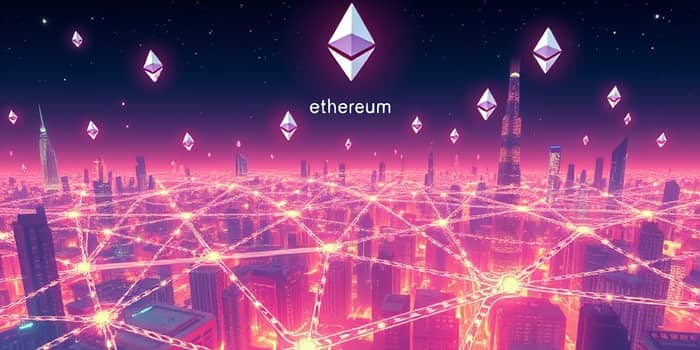Ethereum 2.0 marks a watershed moment in the evolution of blockchain technology. Investors around the world are watching closely as this upgrade promises to reshape how networks operate, how assets are secured, and how sustainable digital ecosystems can become.
In this article, we explore the core innovations, the rollout phases, and the practical implications that every investor should understand to navigate the opportunities and risks presented by Ethereum 2.0.
Overview and Objectives of Ethereum 2.0
Known as “Serenity,” Ethereum 2.0 is designed to tackle three persistent challenges: scalability, security, and sustainability. The original Ethereum blockchain has powered smart contracts and decentralized applications (dApps) since 2015, but growing demand has strained its capacity.
With congestion leading to high fees and slower transactions, the community saw an urgent need for an overhaul. Ethereum 2.0 responds with fundamental changes that lay the foundation for a future-proof ecosystem.
Major Technical Changes
Two pillars define the technical metamorphosis: a shift in consensus mechanism and the introduction of shard chains. Together, they promise to redefine throughput and energy efficiency.
Proof-of-Work to Proof-of-Stake Transition
The network abandons its energy-intensive mining model in favor of a elegant proof-of-stake mechanism. Validators replace miners, staking ETH as collateral to propose and attest to new blocks.
- dramatically reduced energy consumption—a 99.95% drop compared to PoW
- Accessible validation with 32 ETH minimum stake (delegation options exist)
- staking rewards for ETH holders offering passive income opportunities
- Enhanced network security through economic incentives and penalties
Shard Chains
Rather than processing every transaction on a single main chain, Ethereum 2.0 divides the load across up to 64 parallel shard chains. Each shard can handle its own transactions and smart contracts.
By enabling parallel shard chains processing, throughput can escalate from about 15 transactions per second today to potentially 100,000+ transactions per second with future enhancements, dramatically reducing bottlenecks and fee volatility.
Phases of Rollout
The upgrade unfolds across distinct phases, each building on the last to ensure network stability and continuity.
Phase 0 launched in December 2020 with the Beacon Chain, which introduced the PoS consensus layer. Phase 1 brought shard chains online, although they initially held only data. Phase 1.5 merged the original Ethereum Mainnet into the PoS system, and Phase 2 completes the vision by enabling full execution capabilities on shards.
By April 2023, the network achieved a full transition, seamlessly integrating Mainnet operations with the new consensus and sharding architecture. Each phase has been stress-tested to strike a balance between innovation speed and security assurance.
Implications for Investors
Ethereum 2.0’s transformation creates a new landscape of financial and strategic considerations. From passive income through staking to enhanced protocol utility, investors must weigh the benefits against the inherent risks of a major network upgrade.
- Attractive staking rewards for ETH holders boost potential returns but require technical setup and commitment.
- Improved transaction efficiency could spark wider adoption of dApps, NFTs, and DeFi protocols.
- Lower fees and faster finality strengthen Ethereum’s competitive edge among smart-contract platforms.
- As an energy-efficient network, it appeals to environmentally conscious and ESG-focused investors.
- Locked staking periods may limit liquidity during volatility events.
- Validator misconfigurations can lead to slashing and loss of staked ETH.
- No assurance of immediate price appreciation despite technical upgrades.
- Competition from emerging blockchains could affect long-term market share.
Comparison: Ethereum 1.0 vs. Ethereum 2.0
Other Key Details
Ethereum’s legacy as the pioneer of smart contracts remains intact. With Ethereum 2.0, the network can host increasingly complex dApps, DeFi protocols, and NFTs at scale.
Developers emphasize that Ethereum 2.0 is not a final destination but a truly ever-evolving decentralized platform that supports continuous innovation. Its minimum necessary issuance monetary policy balances security and inflation control.
Emerging use cases span supply chain, gaming, identity management, and enterprise solutions. As Layer 2 rollups and cross-chain bridges proliferate, Ethereum’s role as a foundational layer strengthens.
The Merge and Market Impact
On September 15, 2022, “The Merge” united the Ethereum Mainnet with the Beacon Chain. Despite immense media attention, ETH price movements were muted immediately afterward, underlining that this milestone was primarily a technical achievement rather than a market catalyst.
Long-term effects will depend on actual throughput gains, adoption of staking services, and how swiftly developers deploy shard-enabled applications. Investors should stay vigilant about ongoing developer progress and innovation when assessing Ethereum’s valuation.
Conclusion and Future Outlook
Ethereum 2.0 heralds a new era of blockchain scalability, security, and sustainability. While staking rewards and reduced fees offer promising incentives, the transition carries complexities that require careful evaluation.
For forward-looking investors, Ethereum 2.0 represents both a robust technological upgrade and a unique financial opportunity. As the network evolves, staying informed and engaged with developer and ecosystem developments will be critical to realizing its full potential.
References
- https://osl.com/academy/article/what-is-ethereum-2-0-eth2-about-and-how-will-it-affect-you
- https://www.investopedia.com/ethereum-2-0-6455959
- https://www.tokenmetrics.com/blog/ethereum-2-0
- https://www.dydx.xyz/crypto-learning/ethereum-2-0
- https://www.bitpanda.com/academy/en/lessons/ethereum-20-simply-explained
- https://unchainedcrypto.com/podcast/ethereum-2-0-what-you-need-to-know/
- https://atomicwallet.io/academy/articles/ethereum-vs-ethereum-2-0
- https://coinbureau.com/analysis/ethereum-2/










